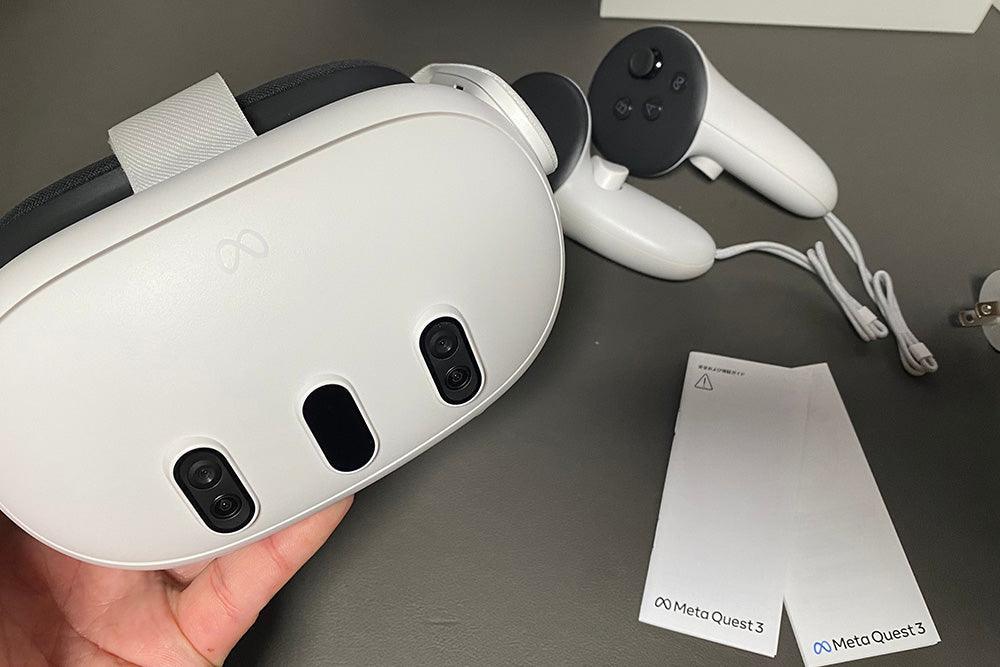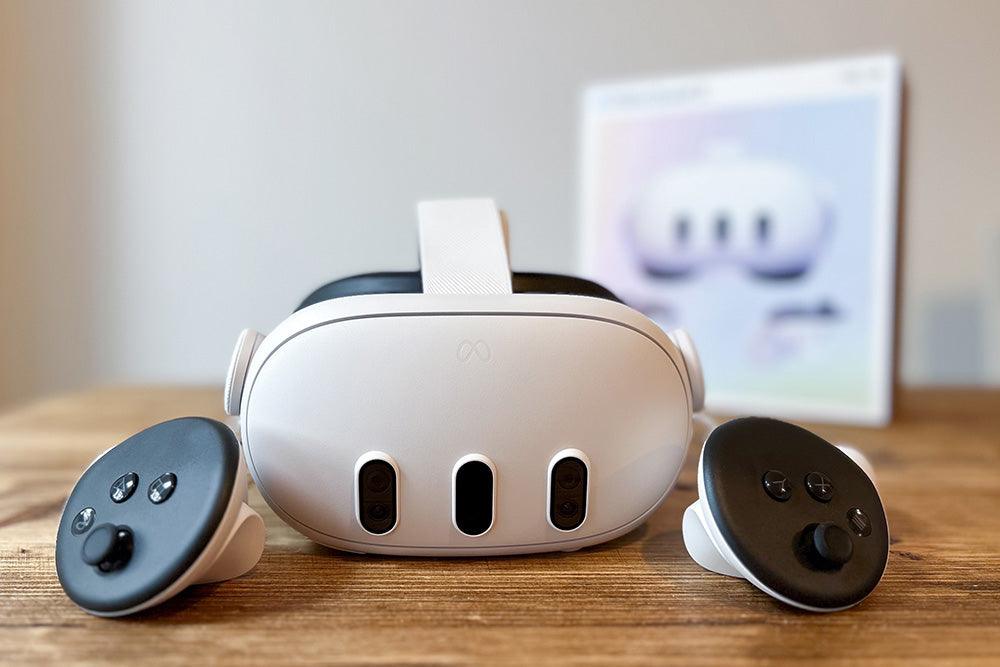The world of virtual and augmented reality is constantly evolving, with new devices entering the market every year. Among the leading contenders in the VR space, Meta’s Quest 3S and Quest Pro have garnered significant attention due to their advanced features and capabilities. Both headsets promise groundbreaking immersive experiences, but when it comes to augmented reality (AR), which one truly stands out?
Both the Quest 3S and Quest Pro are built on Meta’s legacy of high-performance VR headsets, but they approach AR in different ways. While both devices excel in mixed-reality experiences, there are key differences in how they handle AR technology.
The Role of AR in Modern VR Headsets
AR technology blends digital objects with the real world, allowing users to interact with virtual elements while still engaging with their physical environment. Unlike virtual reality (VR), which fully immerses users in a digital world, AR keeps users connected to the real world. In a headset, this means that users can see the environment around them while interacting with computer-generated objects, making AR particularly useful for applications like gaming, training simulations, and professional tools.
For the Meta Quest 3S and Quest Pro, both devices come with AR capabilities, but they have distinct features that differentiate them. Meta’s approach to AR in these headsets involves a combination of advanced sensors, cameras, and software that allow users to interact with the real world in various ways.
Key Differences Between the Meta Quest 3S and Quest Pro
● Design and Build Quality
At first glance, the Meta Quest 3S and Quest Pro may appear similar. Both have lightweight, comfortable builds that offer prolonged use without strain. However, key differences in their design influence how AR is experienced.
The Quest 3S comes with an updated design compared to its predecessors. It is lighter and features an improved fit that reduces face pressure. This makes it more comfortable to wear for extended periods, a key factor for users who engage in long AR sessions. The Quest Pro, on the other hand, is slightly heavier but is designed with a more balanced weight distribution, making it comfortable for long-term use in professional environments.
Both headsets use advanced pancake lenses that offer better clarity and wider fields of view compared to traditional lenses. These lenses play a huge role in both VR and AR, helping to create a more seamless blending of the virtual and physical worlds. In this regard, both headsets deliver impressive visuals, but the Quest Pro has the edge when it comes to overall visual fidelity, especially for mixed-reality applications.
● AR Capabilities and Sensor Technology
The core of augmented reality in any headset lies in its ability to map the real world and overlay digital elements. Both the Quest 3S and Quest Pro use multiple cameras and sensors to achieve this, but they differ in their approach and performance.
The Quest 3S comes with a range of sensors, including a depth sensor, which enhances the accuracy of mixed-reality experiences. The device scans and interprets the physical environment, enabling more immersive AR interactions. For example, when playing AR games or engaging in other AR applications, the Quest 3S automatically maps out the room and adjusts the digital content accordingly.
The Quest Pro, however, takes AR to the next level with its color mixed-reality capabilities. The Quest Pro is equipped with additional sensors and cameras that offer a more advanced understanding of the physical environment. This allows for deeper integration of virtual objects into the real world. The Quest Pro’s color mixed-reality view is one of its standout features, allowing users to blend the virtual and real worlds in a more lifelike way.
● Camera and Video Processing
A major factor in AR performance is the quality of the cameras used to capture the real world. The cameras are responsible for accurately tracking the user’s environment and helping the device overlay virtual content seamlessly.
The Quest 3S has high-quality cameras with excellent tracking capabilities. These cameras help create detailed and responsive AR experiences, whether you are engaging in a simple AR game or using the headset for more complex applications like training simulations or collaborative tasks.
The Quest Pro goes a step further with its advanced camera system. Its array of cameras captures more detailed information about the environment, making it better suited for professional applications where precision is key. This allows users to interact with more detailed and complex AR elements without the experience feeling cluttered or disjointed.
Both devices excel in their own right, but the Quest Pro’s camera and video processing capabilities give it a clear advantage in professional settings where the quality of the AR experience is paramount.
● Mixed Reality Interaction
For AR, how users interact with virtual objects is just as important as the technology that powers the device. Both the Quest 3S and Quest Pro support hand tracking and controller-based interaction, but the level of integration and responsiveness varies.
The Quest 3S offers a responsive hand-tracking system that allows users to interact with virtual objects using their hands, providing a more natural and immersive experience. For example, when engaging with AR content, users can manipulate objects or navigate menus using simple hand gestures, which creates a more intuitive interface.
The Quest Pro also supports hand tracking but takes the experience to a more advanced level. With the addition of eye-tracking and face-tracking technologies, the Quest Pro offers more personalized interaction. Users can make subtle facial expressions or eye movements to control the headset’s interface. This is particularly useful in professional environments where non-verbal communication is vital.
The combination of hand tracking, eye tracking, and face tracking in the Quest Pro allows for a richer AR experience, making it ideal for users who require a high level of interaction in their AR applications.
● Battery Life and Usage
When it comes to AR, battery life is an important consideration. AR applications, especially those that require real-time interaction with the environment, can be power-hungry. The Quest 3S and Quest Pro both have impressive battery life, but there are some differences between the two that are worth noting.
The Quest 3S offers up to 2 hours of continuous playtime, depending on the application. For most casual AR experiences, this is more than enough. However, for extended use, such as professional tasks or long gaming sessions, users may need to periodically recharge their devices or rely on external battery packs.
The Quest Pro, on the other hand, offers slightly better battery performance, with up to 3 hours of continuous use. This is a notable improvement, especially for users who need the headset for long professional sessions or immersive gaming experiences.
● Price vs. Performance
Price is always a factor to consider when making any purchase. Both the Quest 3S and Quest Pro come with a significant price tag. The Quest 3S is the more affordable option, priced at $500 for the base model, making it a great choice for casual users who want a solid AR experience without breaking the bank.
The Quest Pro, priced at $1,000, is a premium device aimed at professionals and enthusiasts who demand the highest quality in their AR experiences. While it comes with a higher price, the advanced features such as superior comfort, improved camera systems, and mixed-reality interactions justify the cost for many users.
Which Headset Offers the Best AR Capabilities?
When it comes to AR capabilities, both the Meta Quest 3S and Quest Pro offer impressive features, but they cater to different user types. The Quest 3S is an excellent choice for casual users who want a high-quality AR experience at an affordable price. It offers solid performance, comfort, and an impressive AR system that can handle most tasks.
The Quest Pro, however, takes AR to the next level with its more advanced features, such as color mixed-reality, enhanced cameras, and the ability to interact with virtual objects using hand tracking, eye tracking, and face tracking.
Finding the Right Fit for Your Needs
In the Meta Quest 3S vs. Quest Pro debate, both headsets excel in AR capabilities but cater to different user needs. The Quest 3S offers impressive performance for casual users, making it an excellent choice for those exploring AR and VR without needing the most advanced features.
On the other hand, the Quest Pro’s superior camera system, color mixed-reality, and hand/eye-tracking technology make it the ideal option for professionals or enthusiasts seeking a more immersive, high-quality experience.
Ultimately, your choice will depend on how you intend to use the headset. For everyday use, gaming, and exploring virtual worlds, the Quest 3S is an outstanding option at a more affordable price. However, for users needing a premium AR experience, especially for professional or complex applications, the Quest Pro and its enhanced capabilities are the obvious choice.
At KIWI Design, we understand the importance of comfort, performance, and usability. Our wide range of Quest 3S accessories will enhance your gaming experience, ensuring that you get the most out of your headset.
Discover how KIWI Design’s products can make your VR and AR experience even better.





Laisser un commentaire
Tous les commentaires sont modérés avant d'être publiés.
Ce site est protégé par hCaptcha, et la Politique de confidentialité et les Conditions de service de hCaptcha s’appliquent.